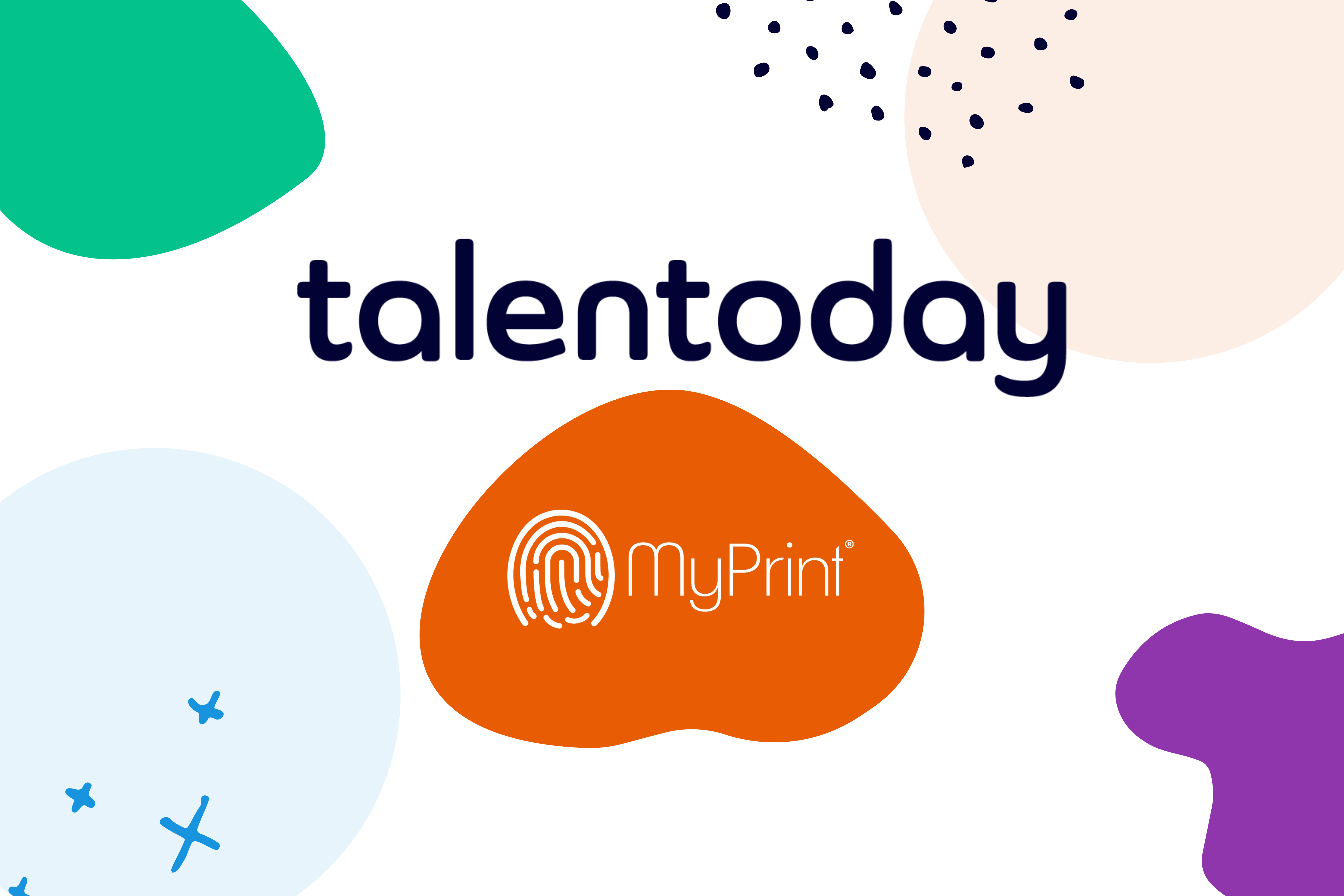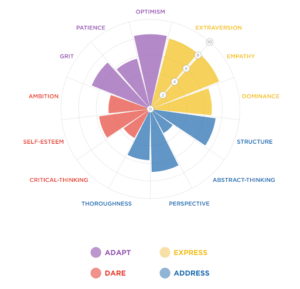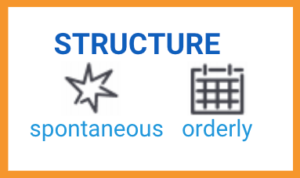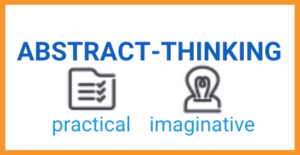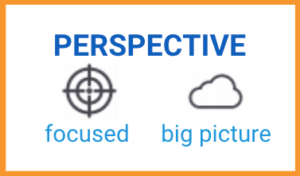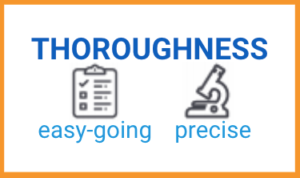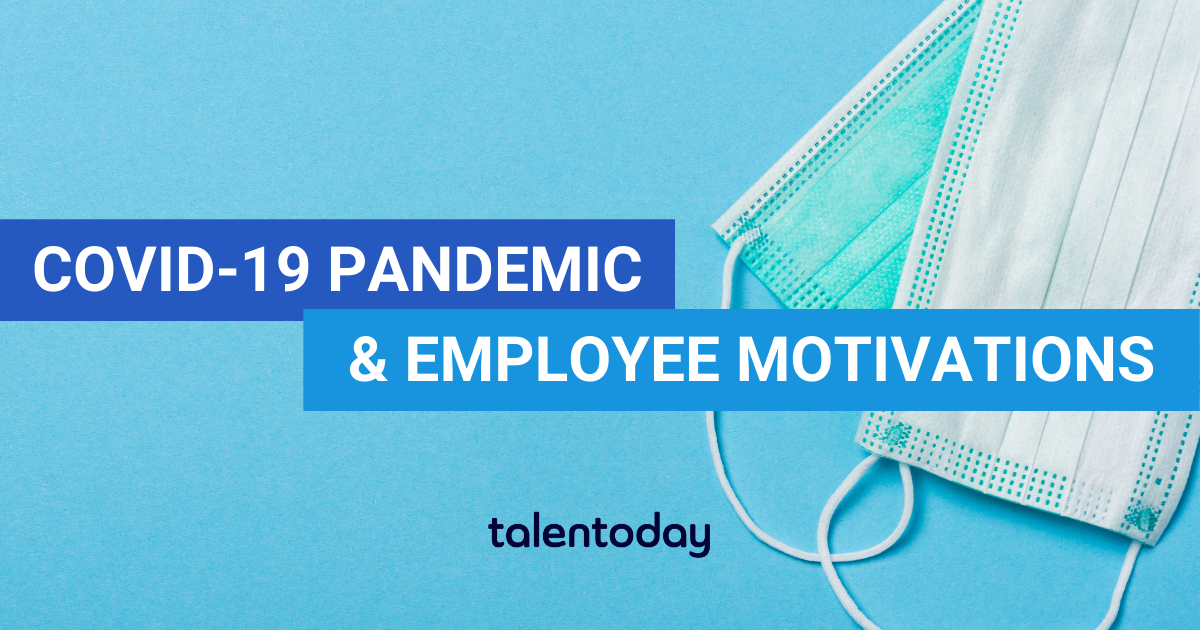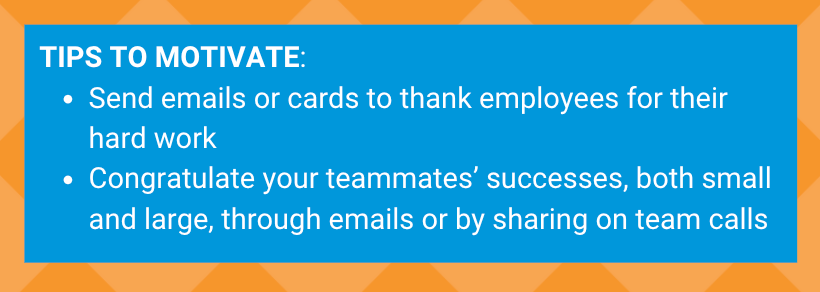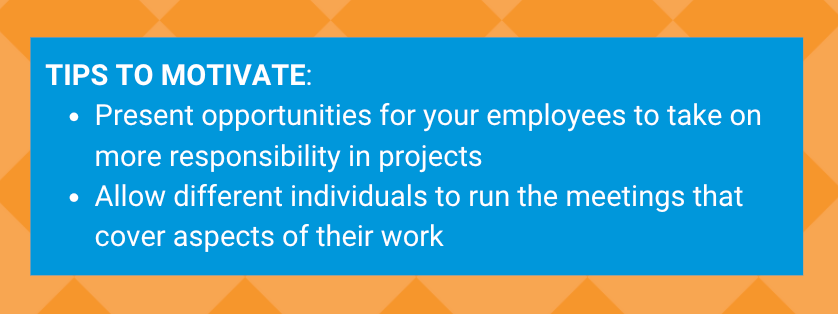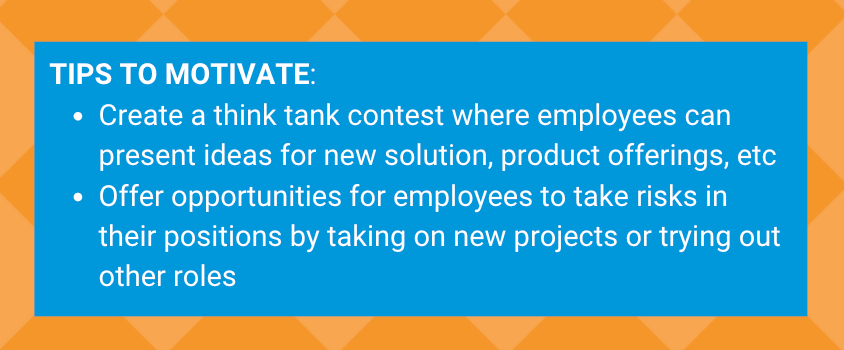Goal Setting Guided by Soft Skills
While there’s never a bad time to set new goals, there sure is something about a fresh new year that boosts motivation! As you take a look at your plans for personal development this year, get a fresh perspective on where you could be going by using your soft skills to guide your goal setting.
Reflect on Where You Currently Stand
When it comes to tackling big goals, it’s important to start with small steps. In order to see how far you have to go, take a look at where you are right now. The skills you possess and the resources you have available can impact the way you set and achieve your goals. Take inventory of what you already have at your fingertips, and keep that into consideration as you determine where you want to go.
Setting Goals with Soft Skills
Next, it’s time to make a plan for what you want to achieve and how you’ll get there. While there are a lot of the goals that might seem like they only require hard skills - such as a certain level of education or required certifications - the truth is that soft skills are the power behind these achievements! By simply being aware of the soft skill strengths you possess, you will be able to better understand how you approach situations and what motivates you, as well as be better equipped to set and reach attainable goals.
Let’s say you want to grow your professional network in the year ahead. Before committing to this goal, it’s important to ask yourself questions about your personality. Are you an introverted person or do you tend to seek a spotlight? If you take the time for self reflection, you can determine what a realistic goal looks like for you and better plan the necessary steps to reach it. For example, if you take a while to warm up around new people, you might make a goal to connect with a certain number of people on LinkedIn each month. However, a more extroverted person might look up conferences or large virtual events that provide an opportunity to dive right into new relationships. Although the end goal is the same, to grow your network, the path to get there might look different from person to person.
Develop a Clear Path Forward
Now that you have a better understanding of where you currently are, take a look at where you want to be and determine a clear path to get there. If you can’t see a plausible way to reach your goal, reevaluate how to set realistic goals in the right direction.
After all, the soft skills you have today can empower your growth tomorrow! Understanding the way you structure your day or what motivates you can help you determine the best way to create a path to your goal. Other goals can be reached by developing soft skills you may not currently use as much. For example, if you have a professional goal to move into a management position at work, you might want to develop some of the most in-demand skills that businesses are looking for when hiring for leadership positions. According to The Balance Careers, these areas of focus can include communication skills, empathy and flexibility.
Whether the path forward utilizes existing skills or is developed with soft skills growth in mind, it’s important to write everything down. Committing to goals mentally is a great first step, but putting them to paper or a digital space helps to make them real. Include checkpoints at regular intervals throughout your journey in order to track progress and adjust goals along the way.
What Are You Waiting For? Get Started!
There’s no time like the present when it comes to self-improvement. Take some time to reflect on the strengths you currently possess, then determine how you can use those skills to get to where you want to be.
Ready to discover your soft skill strengths and improve your goal setting this year? Take our free MyPrint assessment today by clicking here!
How to Cope With Empathy Overload at Work
Do you ever feel like people gravitate towards you to vent? If you hear a coworker telling you about how stressed out they are with their workload, do you offer to lend a hand without considering your own priorities? When making decisions, do you carefully consider the potential impact on others?
If you answered yes to any of these questions, chances are you are a highly empathetic person. The past few months have not been easy for the empaths of the world. Between personal circumstances, situations within your close circle and global events, it is easy to experience empathy overload. It's a condition that can have negative consequences in any setting, especially in the workplace.
Empathy at Work
Every workplace needs empathetic people. In fact, it is often considered one of the most important skills for a successful leader to have. The ability to lead and work with others while anticipating their needs and being aware of their feelings has been shown to have a positive influence on job performance. However, without proper self-care, over reliance on a key soft skill can have negative outcomes.
When empathetic individuals experience a lot of emotional hardships at work, it can lead to burnout. This can come from internalizing the stress of others, having to make important decisions, or even taking on the emotional impact of others’ personal lives. This burnout can lead to a person withdrawing from others, avoiding situations that might create an emotional toll on themselves or even lead to the point of physical distress.
Preventing Empathy Overload
Before getting to the point of empathy overload, take some time to implement some of these preventative measures:
- Practice self-care. Find simple ways to relax and decompress after an overwhelming day. Take a walk, read a book, meditate - find what calms you down and allows you to focus on your own wellbeing.
- Compartmentalize what affects you versus what affects others. It is okay to feel empathy towards others, and it is also okay to take a step back and understand what directly impacts you and what does not.
- Take an objective approach to problems. When making workplace decisions, start by taking an objective look at the facts.
- Be okay with saying no. Empathetic people tend to take on things they cannot handle in order to help others out. It is okay to tell others no sometimes in order to preserve your own energy.
- Communicate your own needs. If you are feeling overwhelmed or burned out, ask for help. Whether this involves pushing back timelines, passing off tasks or taking a day off - let your managers and coworkers know when you need an extra hand.
The World Needs Empathetic People
Feeling like you are overwhelmed by others’ emotions is not a sign of weakness. We need more empathetic people - people who will put the concerns of others first, people who will make others feel seen and heard - in the workplace and in the world. By taking care of yourself and implementing healthy empathy practices, you will be more well-equipped to help others.
Want to learn more about your empathy in a professional context? Take our MyPrint soft skills assessment today at www.talentoday.com.
Welcome to MyPrint: Understanding Your Soft Skills Assessment
The digital world is full of people creating an online persona to market themselves to others in a certain way. Between social media filters, staged photos, and selective sharing of information, what you see is not always the most accurate representation of what a person is truly like. It can be hard to discover your true, unique self, let alone share it with others! That's where utilizing a scientifically-based soft skills assessment can help.
Why are soft skills important?
Here at Talentoday, we love to say that, “Hard skills will get you a job, but your soft skills are what make you great at your job.” Simply said, hard skills are important to get where you want to be in life; earning a degree or certification, gaining work experience, and having the basic knowledge for a position are essential. However, soft skills are the things that will set you apart. How you interact with others, the way you organize yourself and prioritize your work, and being able to adapt to your environment are all examples of soft skills that can lead to career success.
What is MyPrint?
MyPrint is Talentoday’s soft skills assessment that is designed to dive into the personality, motivations, and behaviors that make you unique. The questions are all geared towards the workplace to help you get a better understanding of your soft skills in a professional context.
MyPrint consists of 13 personality dimensions, 11 motivation dimensions, and 11 professional behaviors. The personality and motivation dimensions each have two ends of the scale, called poles, which leads to an output of 26 possible personality traits and 22 different motivators. Each of the professional behaviors has 4 possible styles, leading to information on 44 different behavioral styles. If you’re trying to figure out how many unique results that leads to, we did the math for you: there are over 70.3 trillion possible MyPrint combinations (70,368,744,177,664 to be exact!)
How do I take a MyPrint?
Taking a MyPrint is easier than ever! Simply click here to be taken directly to the registration page. The assessment is free to take, and upon completion you will be able to see your Personality Radar in the application, and your MyPrint One Pager will be available to download.
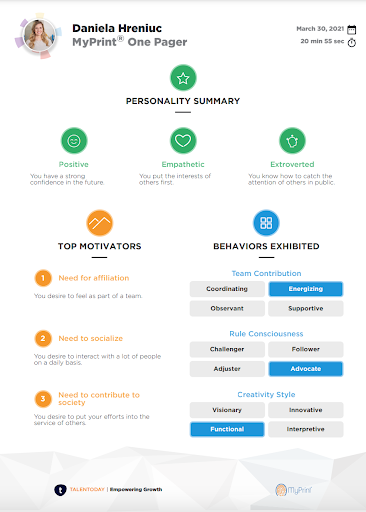
After you have taken some time to view your results, share them! You have the option to share your MyPrint results to multiple social media channels, including LinkedIn, Twitter, and Facebook.
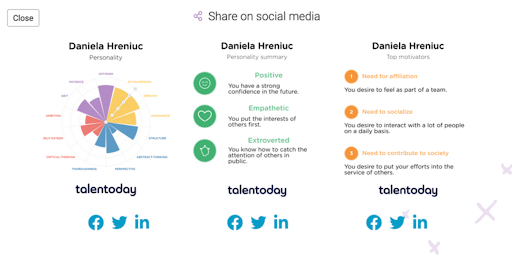
The next time you are looking for a new position, or even looking for more responsibilities or a promotion from your current role, make sure you highlight your soft skills! Use your MyPrint to help showcase the soft skill strengths that make you unique!
Want to learn more about what makes you unique? Visit our website talentoday.com and take a MyPrint assessment today!
How Soft Skills Can Help Students Choose a Major
Making the decision to continue on with your education is a big investment, no matter who you are or what level of education you are pursuing. Even if you are one of the lucky students whose tuition is paid for based on your geographic location or scholarships, the time and work that goes into a successful college career is something that should not be taken lightly.
According to the US Department of Education, 30 percent of students switch majors at least once. Switching majors can be costly and time consuming, so before you just jump into the major that is projected to lead to the highest paying job, here are four steps you can take to make sure it’s the path that is right for you.
Determine which soft skills you already have.
There are so many majors out there that it can be hard to narrow it down. A good place to start is with some self-reflection. Since college is the place to go for the hard skills you will need in your career, one of the best ways to make sure you are choosing the right educational path is to be equipped with the soft skills needed for success.
A good place to start is by thinking of the skills that have made you successful in your previous work and educational experiences. Were you always the organized one in group projects? Maybe your communication skills and patience have helped you in jobs like retail or the service industry. Even the ability to juggle multiple tasks at once can be a key skill that you are already equipped with. Your hard skills will get you the job you are looking for, but those soft skills are what will make you successful in that position.
Which careers need your soft skills?
Once you have taken some time to determine the soft skills that you already possess, a great next step is to find a field or career path that requires those skills. Lucky for you, we have already done some research on this topic at Talentoday! Assessment results from our user database have revealed that there are a lot of soft skills that are transferable across multiple fields. Rather than feeling like your soft skills are narrowing out possibilities, think of them as guiding you in a direction that you will have a natural inclination towards!
Fill in those gaps!
Continuing your education is the time to gain the missing hard skills for your future career, but it’s not too late to develop your soft skills as well. People are dynamic and capable of growth in so many areas of our lives, and your soft skills are no different!
There are a lot of ways that you can work to fill in your soft skill gaps. Being aware of the skills that you want to improve or develop can help you be conscientious about working on those skills. You can also use college to your advantage! Most universities, junior colleges, and online programs offer classes on a variety of topics. Work with an advisor to choose courses that challenge you, rather than opting for ones that already play to your strengths. For example, if you have a knack for research, but have a fear of public speaking, a communication class might be a good fit to begin expanding your soft skills palette.
Take your time.
Lastly, take your time. Although it seems like you need to declare your major immediately, it is okay to do things at your own pace. Most universities will require you to start by taking some general classes of interest before you jump into your declared major. There is no “right” timeline for a decision like this, and it is better to take some time on the front end to make the most of your investment!
Interested in learning more about what soft skills make you unique? Click here to take a MyPrint assessment today!
Unpacking Your Personality: How Do You Address Tasks and Projects?
Even if you think that you know a lot about yourself and your personality, it is always good to be open to an unbiased opinion about how you respond to the world around you. This can include how you interact with others in class or during meetings, the way you handle pressure of deadlines or tests, and how you organize projects. Taking a personality or soft skills assessment, like MyPrint, can help to uncover strengths you were unaware of or reinforce what you already knew.
What are your strengths and how do you use them on a daily basis? Are there any skills that you are missing or want to improve upon? These are just a couple of the questions that you can ask yourself to get the most out of your soft skills assessment results.
Understand how you approach tasks and projects.
Personality and soft skill assessments help us understand ourselves better by using basic psychological models, such as the Big Five Model of personality. At Talentoday, we have organized our personality dimensions into four groups, called the personality axes, to show how understanding your different traits will empower you to navigate your day-to-day life using science and technology. The four personality axes in MyPrint help us understand how we interact with other people (“Express” - yellow), our tasks and projects (“Address” - blue), ourselves (“Dare” - red), and our environment (“Adapt” - purple).
The Address section of the personality axes is helpful for understanding the way someone approaches issues and undertakes their tasks or projects. This can be beneficial when starting a fresh school year or new job, or if you’re just generally interested in making meaningful improvements in your day-to-day responsibilities.
The four personality dimensions that make up the Address axis are: Structure, Abstract-Thinking, Perspective, and Thoroughness. Being on the high or low end of each of these dimensions does not make you better or worse at planning or conducting your tasks; rather, it helps you to understand your strength in each of those areas so that you can lean into the things you are good at, while pinpointing the areas in which you may want to improve. Remember, you can always leverage an assessment to help understand your personality with an unbiased, scientific approach.
Structure
The two ends of the structure dimension are Spontaneous and Orderly.
If you are a spontaneous person, then you are naturally intuitive. You like to stay flexible in your schedule by avoiding planning things too far in advance, and you often leave a lot of room for improvisation in your working methods. If you are finding that you need a little bit more structure when organizing your week, start by writing down your most important objectives, and do your best to accomplish those even if other things come your way.
On the other end of the structure dimension are the orderly people. If you are orderly, then you are very organized and show no tolerance of ambiguity in your work. You always plan your tasks and projects well in advance and rarely deviate from your schedule. Although this may seem like it is the best way to organize and plan, there are certain times when flexibility is beneficial. When creating your to-do list, determine what is an absolute priority and what you can be flexible with; stay open to opportunities that may come your way.
Abstract-Thinking
The two ends of the abstract-thinking dimension are Practical and Imaginative.
If you are a practical person, you are realistic and don’t like to waste too much time wondering why things are the way they are. You rely on concrete examples to solve issues. If you find yourself stuck when working on an assignment, try to tap into your imagination a little bit. Think of some out-of-the-box ideas for your projects that you might not normally entertain.
On the other end of the abstract-thinking dimension are the imaginative people. If you are imaginative, you often conceptualize problems and try different approaches in order to solve them in the most relevant, but not always the most realistic way. Imaginative people are very creative, but if you find yourself unable to solve an issue, try to only look at what resources and solutions that you actually have available.
Perspective
The two ends of the perspective dimension are Focused and Big Picture.
If you are a focused person, then you are action-oriented. You probably prefer to concentrate on achieving short-term results, rather than spending time to anticipate their future implications. While it is beneficial to focus on those immediate outcomes, there is also a lot to be learned when looking at the long-term impacts of what you are doing. When learning something new or working on a project, think about the relevance and meaning it will have a few years into the future.
The other end of the perspective scale is where the big picture thinkers are. If you are big pictured, you are naturally thoughtful in your work. You will anticipate the long-term consequences of what you are doing as much as possible to have a clear vision of the final outcomes. At times it can be exhausting to think about the future when there is so much uncertainty. If you find yourself being overwhelmed by this, try to focus on the pieces of a project that you can immediately impact regardless of their long-term implications.
Thoroughness
The two ends of the thoroughness dimension are Easy-Going and Precise.
If you are an easy-going person, you are typically tolerant of imperfections. You prefer to value your productivity at work by focusing on the bottom-line, rather than dwelling on every little detail. Having a quantity-centered approach to your work can be beneficial at times, but it is always good to be cognizant of which projects might require a little more attention to detail. When these types of projects come up, schedule some extra review time into the end of your day!
On the other end of the thoroughness dimension we have the precise folks. If you are a precise person, you are naturally diligent. You set high-quality standards for your work and spend time to refine it. However, sometimes it is hard to turn off the ‘perfectionist’ switch. Determine which areas of your work need the extra attention to details, and try to only spend the necessary time on the rest.
Putting it all into action.
Now that you know a little more about the personality traits used to understand how you take on tasks and projects, as part of MyPrint’s Address dimension, it is time for you to take action. If you haven’t taken a MyPrint just yet, you can take it for free in just 25 minutes! There are many other helpful insights besides the ones we discussed here, such as what motivates you, or getting a better understanding of your professional behaviors. Take a look at which soft skill strengths you have and what motivates you, and use that information to help you improve as you take on your next project!
Letting Your Personality Shine in a Remote Work World
How do you remain unique in a remote work world? In the pre-pandemic workplace, many of us may have taken the casual ways of letting our personalities shine at work for granted. You probably didn’t even think twice about it as it happened! Maybe you were the social butterfly stopping by multiple desks en route to your own. Maybe you were the ‘first in and last to leave’ person who was always striving for the next career opportunity. Whatever style you worked with, there were little moments each day to bring your identity to life.
Now, the expansion of work from home opportunities has changed the ways we interact. How do you show who you truly are through small screens connected by the internet?
Although it requires more work to let your personality shine in a remote environment, technology has made the transition a little less painful. They may not be the same as those face-to-face interactions, but our virtual personalities are just as important!
Make meetings work for you.
Meetings have not disappeared from office culture in the last year, but they certainly have evolved. Video calls underwent an unprecedented expansion during the COVID-19 pandemic, For example, Zoom reported growing from 10 million peak daily meeting participants in 2019 to 300 million by April 2020. While virtual meeting tools may have helped to keep teams connected during this time, the repeated virtual interactions on screen can take a toll even on the most outgoing of people. Is it any shock that ‘Zoom fatigue’ quickly became a part of our vernacular?
These countless virtual meetings present new challenges, including finding ways to you distinguish yourself from the faces staring back at you from the video grid. If you are a social person, try logging in a minute before the meeting starts. This way you can greet people with some small talk as they join in the meeting. For our curious individuals out there who like to learn new things or ask a lot of questions, if the virtual meeting doesn’t allow for your normal cadence, take notes with your thoughts and questions and send them to the meeting host in an email at the end of the call. For our introverted folks, it’s always okay to turn the camera off and stay muted every now and then.
In other words, make these video meetings work for you!
We are used to adapting to multiple personality types in a conference room, so this adjustment to accommodating multiple personalities in the virtual space is something we are all learning together. If you find yourself in a position where this format is hindering your work performance or wellbeing, talk with your manager or HR department to discuss potential adjustments.
Email is still essential.
Email may not have ever been the working world's favorite way to communicate, but at least there were opportunities to smooth out unclear communication and tension face-to-face in the office. Now, our virtual communication is often lacking that in-person context or interaction, and we find ourselves communicating complex messages via text alone.
If you are a straightforward or direct communicator, your emails might come across as being abrasive if you don’t have the ability to smile at the recipients as you pass each other in the hallway later that day. In this situation, you would want to make sure that you include some warm greetings or salutations to your emails.
Are you or someone you know an "email blackhole?" This phenomenon can be described as an inbox where messages are sent, but no replies ever return. If this sounds like you, it may be time to reconsider your approach to email! In a physical work environment, a lack of responsiveness could be a minor annoyance. However, when your coworkers are dependent on emails as a main form of communication, you might need to shift your email personality to being quicker with follow-up.
While email has long been the go-to virtual setting for sharing our work personalities, it’s only becoming more essential as teams embrace hybrid and remote settings. Before sending that next message, take a moment to consider how to personalize your text communications.
Be transparent.
The most important aspect of any relationship or work environment is transparency. Although you might need to work a little bit harder to let your personality come through in a virtual space, stay true to your authentic self. Check in with yourself regularly, and communicate with your boss or coworkers if you feel as though your personality strengths or motivations are not being used or met. By doing this, you will allow yourself to not only be fulfilled in your work, but also help to form an environment that you can perform the most effectively in.
Rethink your office culture.
Historically, office culture has started in the physical environment. We create a ‘second family’ at work by getting to know our coworkers through team building activities or simply chatting over a cup of coffee. As offices continue to embrace hybrid and remote work models, the idea of building culture on the basis of these social interactions alone may be on the way out,
Now more than ever, the organizational culture you are a part of has the ability to develop and grow in any direction you choose. Take this opportunity to really understand your personality strengths and what motivates you, and curate a culture with your virtual team to ensure you are and finding purpose in your work!
Want to learn more about your personality strengths and workplace motivators? Click here to take a MyPrint!
How to Conduct a Soft Skills Interview in 4 Easy Steps
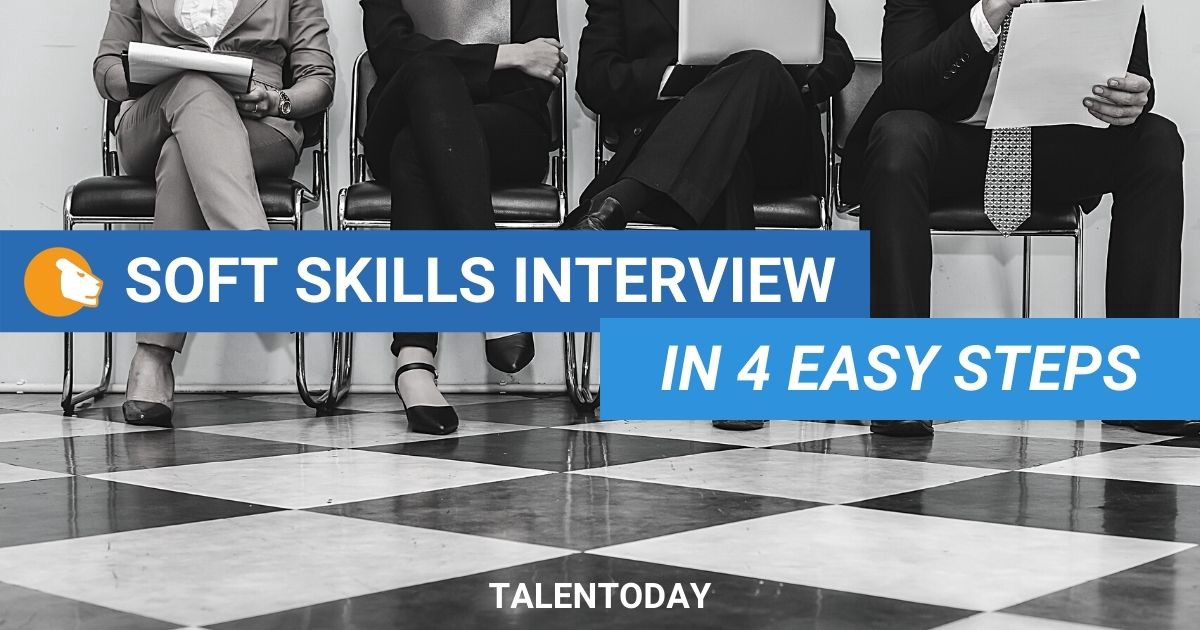
If you have been following our blog then you know how important we think soft skills are to incorporate into your daily work lives.
“Hard skills will get you the job, but soft skills will make you successful.” -Me, at least 3 times per week
However, sometimes this can seem overwhelming. Where should you, as a manager, start? In this blog article we will take a step-by-step look at how to use soft skills from the very beginning of the employee lifecycle: the interview process.
Step 1: The Job Requirements
At first glance, you might think you know what goes into a position. Maybe you have been hiring for this position for quite some time, or you have worked with individuals in this role before. Although you might think you know all of the important requirements for a role, it is still important to take the proper steps to evaluate a job description in order to make a more informed decision on what the role entails.
Once you have determined what hard skills and qualifications are necessary for a position, it is time to determine what soft skills will help someone be successful in this role. There are many ways to find this information. Here are a few of the common ones:
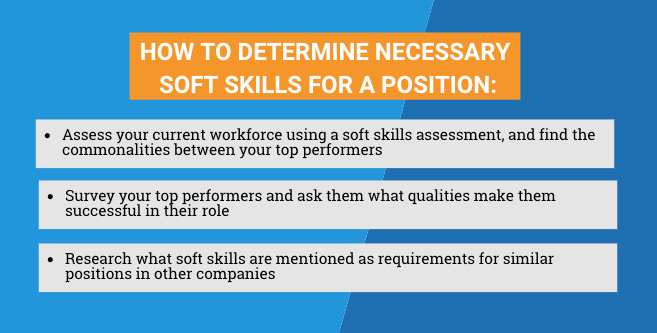
It is very important that you are using a scientifically reliable and valid method to assess your teams’ soft skills. For the purpose of this article, we recommend using the MyPrint® assessment to assess your current workforce and using some of our tools available through Talentoday Manager to determine what to look for during the interview process.
An important note here: although you are looking for commonalities among your top performers, that does not mean that you want a cookie cutter of those individuals. One of the most important things for a team’s success is having diversity among group members to help fill in skills gaps and increase creativity and innovation¹.
Step 2: Preparation
Now that you have determined what the important soft skills are for the position, you need to prepare for the interview. Having a set interview process helps to ensure that you are making more informed decisions for your company and not using personal judgments or unconscious biases when hiring. Topgrading² is one example of an interview methodology that is intended to help identify top talent, and incorporating soft skills into this methodology is seamless.
Prior to the interview starting, you will also want your candidates to complete a MyPrint® assessment (check that their results are from the past 6 months to ensure accuracy). Make sure that the hiring manager and anyone involved in the interview process have taken the time to review the candidate’s MyPrint® One Pager (soft skills summary) and are familiar with the soft skills that have been determined important for the role.
To prepare for the soft skills portion of the interview, we recommend that you have the Premium Report version of the candidate’s results handy and review their top 3 personality strengths, motivators, and behaviors (as shown on the One Pager report). Then ask yourself the following questions:
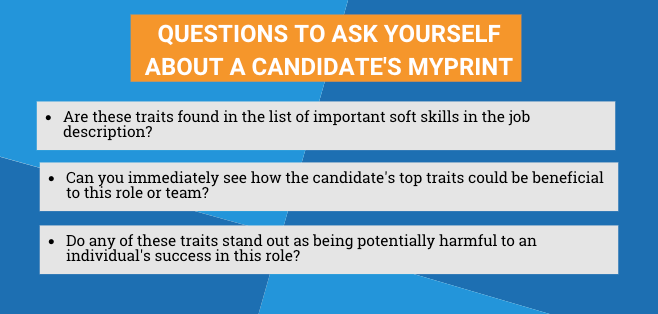
Lastly, take a look at the candidate’s behaviors. The MyPrint® Premium Report has two interview questions tailored to each behavioral style to help gain a better understanding of how that individual showcases those styles. Make a note of any behaviors that you would like to dig deeper on, and have those interview questions ready to go!
Step 3: Conducting the Interview
When conducting a soft skills interview, it is important to stay open minded. If someone’s top three MyPrint® traits aren’t the exact three that you are looking for that does not mean they are not going to be a good candidate. Instead, look at their Premium Report to see where they fall on the scale for each of those traits. Take the time to ask questions around those topics, and make sure that you are being clear about the role expectations and see if that matches what they are looking for.
Step 4: Scoring the Interview
Once the interview is completed and the candidate has left, it is not time to make a decision quite yet! Take the time to review your interview notes and apply some quantitative metrics to what you were looking at.
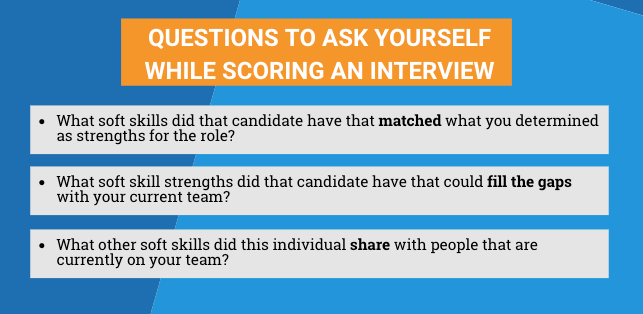
To ensure fairness between candidates, use a standardized method of scoring the interviews. Grading methods can include ranking responses or finding the difference between ideal scores and actual scores in their MyPrint® scales.
To Sum It All Up…
Using soft skills in the interview process can help you make more informed hiring decisions, and help you find candidates who will be more successful in their role. The interview process is an investment for everyone involved, so it is not something that should be done without careful evaluation and purpose.
Remember to be open-minded when it comes to soft skills; you won’t have all of the answers right away. As you gather more information over time you will learn more about what personality traits, motivations, and behavioral styles can be attributed to success in a role and sometimes, what you find might surprise you!
Want more information about soft skill interviewing, or to receive a copy of our template? Email Talentoday at customer@talentoday.com to learn more about our assessment and services!
Sources
¹https://www.managers.org.uk/knowledge-and-insights/listicle/the-five-business-benefits-of-a-diverse-team/
²https://topgrading.com/
COVID-19 Impact on Motivations in the Workforce
It’s been one year since COVID-19 took the world by storm. Countries started to close their borders and government safety regulations were enforced. As a result of unpredictable lockdown and safety measures, each person’s environment has changed in some way. For millions of typical “office workers” this meant working from home, while those deemed essential continued to go into work with increased risk. With all of this change happening externally, there is internal change that comes with it. How has the move to a remote workspace, social distancing, new health measures, and other pandemic outcomes impacted the things that motivate your employees? Let’s learn more about how motivations work first.
One of the most widely accepted motivation theories is Maslow’s Hierarchy of Needs. You may recognize the motivation pyramid that has found its way into most every psychology, marketing, and ethics textbook, and it is the foundation for the Talentoday MyPrint motivation dimensions as well! There are five stages of motivation included in the pyramid: physiological needs, safety needs, love and belongingness needs, esteem needs, and self-actualization needs. The basis of Maslow’s theory is that everyone starts at the bottom stage of the pyramid with their most basic physiological needs: food, water, clothing, and shelter. Once those needs are met, we are able to work our way up to safety, and so on.
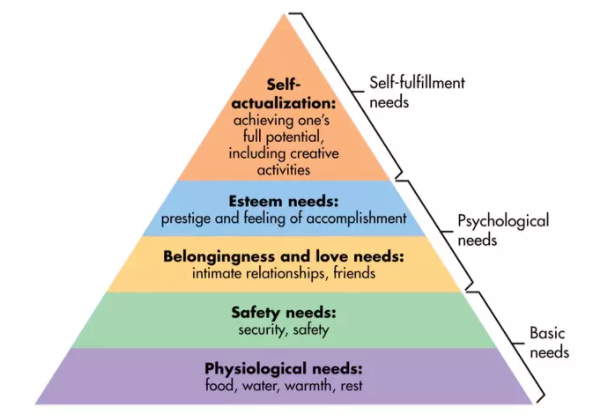
Our environment plays a huge role in our motivations and where we’re at on the pyramid. For example, during the COVID-19 pandemic, we have seen a lot of people focus on addressing their basic safety needs, like employment and financial stability. Other factors that can impact our motivations include, but are not limited to, changes to our work environment, major family events such as births or deaths, changes in our relationship status, living situations, or unforeseen financial events.
Motivations and MyPrint®
Since we know that motivations are so dependent on our environment, we decided to take a look at how the COVID-19 pandemic has impacted the motivations found in MyPrint®. To do this, we calculated the motivations that saw the biggest increase amongst assessment takers before and after March 2020. We observed three dimensions that had a larger increase than the others: Recognition, Responsibility, and Excitement.
Recognition: Need for External Recognition
People who have a need for external recognition are driven to work harder when they receive positive feedback and praise from coworkers. When working in an office environment, this will naturally happen more frequently; you tell an employee they did great on a presentation while passing their desk, or congratulate a coworker on hitting a milestone while you’re getting your morning coffee. However, in a remote environment, we need to be more intentional about giving that recognition. Since March 2020, a total of 81% of the global workforce has had their workplace fully or partly closed. Whether this impacts someone directly, or if they are seeing this happen with their friends and loved ones, receiving that external recognition can help to reassure individuals that they are doing a good job and motivate them to continue the good work.
Responsibility: Need for Taking Personal Responsibility
People who have a need for taking personal responsibility are comfortable being held accountable for others’ actions, regardless of error or failure, and are more comfortable being accountable for their own work as well. Moving into a remote work environment means that individuals need to take on more personal responsibilities than they did before: from managing all of their time to taking on pieces of projects that they might not have needed to before. For some people, having more control over their work environment can create that drive to keep them motivated at work.
Excitement: Need for Adventure
People with a need for adventure are driven by situations that offer thrill, seek to take risks and are very tolerant of unpredictable situations. A lot of people have experienced a more stagnant environment since March of 2020. Whether it is due to stay at home orders, travel restrictions, or lack of a commute, we are all going through it. Because of this, it is not surprising that people are craving more adventure in their lives. Work can be a great place to create excitement — from new opportunities to new roles or training, providing an environment where employees can take more risks and try new things can lead to a more engaged workforce.
Check In With Your Workforce
Your workforce is going to evolve over time, and it is important to keep up with those changes! Whether it’s a global pandemic to impact the shift in motivations, or if it’s typical life events taking place, you want to make sure that you are evolving alongside your employees. Changes to an employee’s motivations means adjusting your management style, and by keeping up with these changes, you can create the most engaging environment for your workforce as possible.
We recommend employees take the MyPrint assessment every 6–12 months. Interested in learning more about MyPrint and how our solutions can help you better understand your workforce? Contact Talentoday at customer@talentoday.com to learn more about our assessment and services!
Using Technology to Further Your Diversity, Equity and Inclusion Efforts
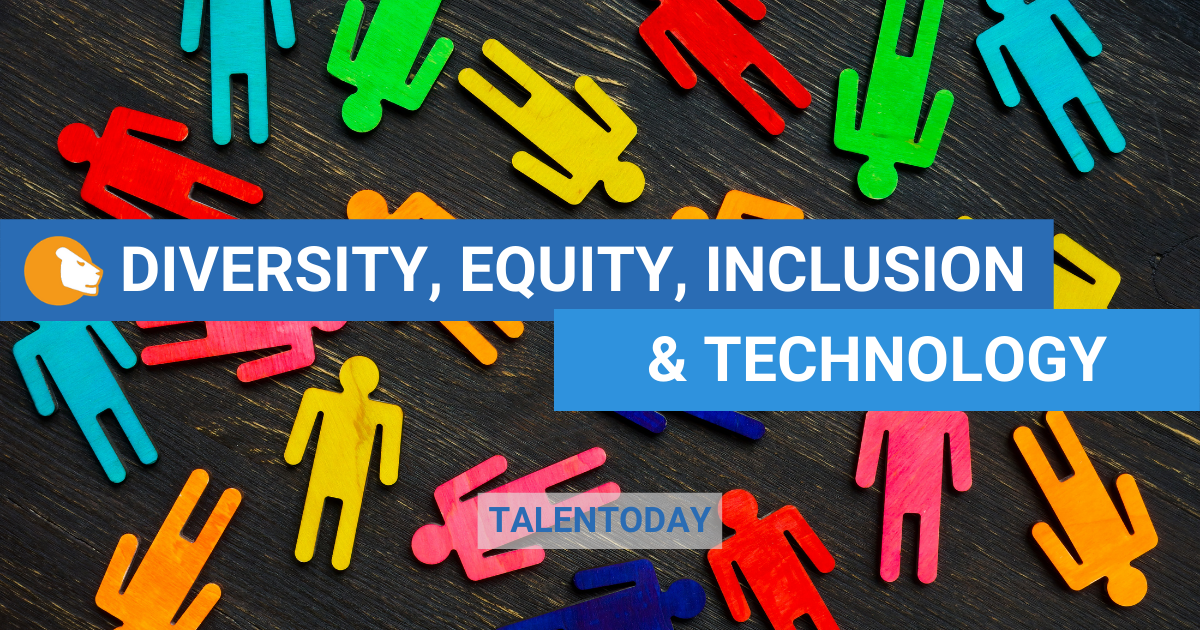
Workplace managers and teams are prioritizing Diversity, Equity and Inclusion (DEI) more now than ever before, and for good reason. DEI helps improve the presence of people of different races, genders, religions, sexual orientations, etc. (diversity); the fair and respectful treatment of all people (equity); and the extent to which all individuals feel respected, accepted and valued (inclusion). DEI also delivers a multitude of benefits that come from having a diverse population in your organization, including: profitability and value creation, innovation, and better decision making.
While business leaders have committed to diversifying their workforce, HR professionals and recruiters are still tasked with hiring the right people. Thankfully, science and technology can help organizations make the right hiring decisions while supporting DEI goals. Digital solutions and tools can help with everything from removing implicit bias from the selection process to predicting how someone will contribute to a team, and understanding how they will behave in a professional setting.
Opportunities and pitfalls associated with diverse hiring efforts
Research shows that bias is present in the hiring process and can start before a candidate walks in the door. For example, certain verbiage can attract more men than women, and people with white sounding names receive more callbacks on average than those with stereotypically black-sounding names. Implementing tools, such as a behavioral assessment, in your selection process can help you to proactively remove implicit biases. You can see a person for their strengths and not lean towards someone who is similar to you.
A common term that is used in the selection process is “culture fit.” However, when maintaining organizational culture becomes the sole focus of this process, it can have the unintentional consequence of hiring different versions of the same person. Allow your core purpose and values to guide you, while being cautious of how you equate those to your “culture” and how you assess a candidate’s ability to uphold your purpose and values. By making room for diversity to be a part of your culture, you will be empowered to celebrate and appreciate the value that each person is adding to your organization.
Diversity beyond what the eye can see
Before blindly jumping into diverse recruiting initiatives, decide what diversity means for your organization. Is it women in leadership? Recruiting and hiring people of color? Creating a comfortable environment that supports various stages of life? All of the above?
Think of the product or service that you’re selling. Can you confidently say that your team is reflective of the people you serve? Having people who can relate to your customer base is vital to the success of your organization. In fact, a team member who shares a client’s ethnicity is 152% more likely to understand the client. In this case, the diversity that we are striving for is easy to identify, and sometimes it goes beyond what we are able to outwardly see.
Understanding the importance of diversity of thought is an important step for your team to reach their highest potential. When team members are able to bring in different perspectives, it helps to create a culture of challenging the norms to allow for new and creative ideas and solutions. These various perspectives are the result of distinct life experiences or work backgrounds and can guide your team to greater successes.
How to leverage science and technology within your DEI efforts
As with any strategic change, diversity within an organization doesn’t happen overnight. It will take months of ongoing planning and years of commitment to become a part of the fabric of your organization. Luckily, there are things you can do immediately to promote equity and inclusion .
Create a culture of openness. Allow for ideas to be heard and create a safe environment for people to propose ideas. Give power to all members of your team to make decisions, and provide actionable feedback to their ideas rather than criticism.
Assess your team to see what areas you are lacking in. Confront skill gaps and then solicit teammates with diverse opinions to help you make business decisions and aid in brainstorming solutions.
Leveraging science and technology is a great way to ensure you are taking implicit biases out of the equation and being efficient in your efforts. Tools such as the MyPrint Collaboration Report are helpful for understanding how differences between two people can be beneficial, and visualizing group data through the Group DNA feature can help to find where your gaps are in your team.
Although change doesn’t happen overnight, there is nothing stopping you from starting the momentum today. Start by fostering inclusion on your team today by telling someone how their work matters. Then, take our complementary MyPrint assessment to start understanding how science and technology can support your goals!
Looking for additional resources and support? Email Talentoday at customer@talentoday.com to learn more about our assessment and services!
Show Your Traits, Not Your Type
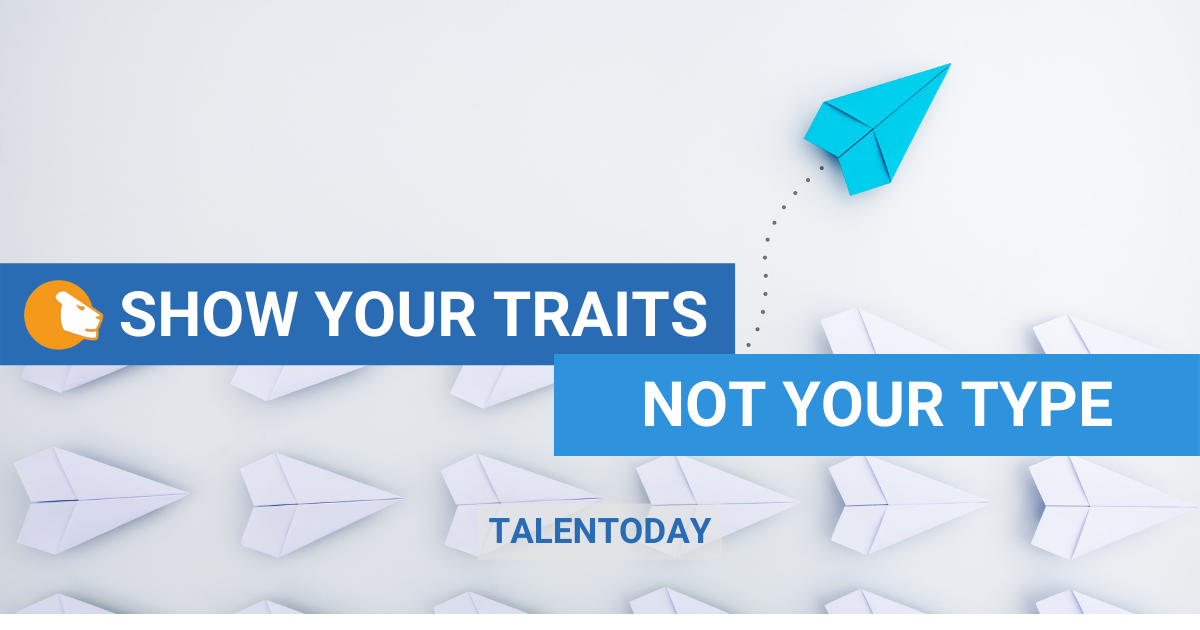
“What’s your type?” In the world of dating, this is the first thing people want to know. An easy answer, right? Intellectual, athletic, artistic — as humans, we typically begin with broad categories to describe ourselves and others. However, once you actually start describing what you’re looking for, you find yourself being more specific. “Likes to have philosophical conversations,” “enjoys outdoor activities in warm climates,” “likes to cook new recipes,” — in reality we are much more complex than those one word generalizations. The same philosophy should apply to soft skill assessments in the workplace. Instead of being bucketed into a generalized type, your traits are the best indicators of your unique strengths. Let’s break down the difference between types and traits.
Type Theory
Type theory is based around the idea that personality is a combination of qualities or dimensions that can be grouped together into a certain number of categories (or types). All people fall within one type based on which group they share the most specific attributes with. Think Myers Briggs or Enneagram, where you are one of 16 combinations of letters (ie, ESFJ) or one of 9 number types.
Yes, type theory is helpful for an organization to get a generalized idea of a person, but does that mean that a company really understands who you are, and more importantly, if you will be successful in the role? For example, if an assessment identifies you as an introvert, the assumption may be that that you are quiet, would prefer to work alone, and you need time to reflect on your thoughts before speaking. It’s a generalization, and while some of those assumptions may be true, chances are not all describe you.
The concern with using types in personality assessments is that humans are much more complex. Instead of Introversion and Extroversion being a dichotomy, it is better understood as a spectrum. That is where trait theory comes into play.
Trait theory
Rather than using broad categories to define human behaviors, trait theory focuses on the individual differences between people and eliminates the ‘boxes’ that type theory tries to fit people into. Going back to the introverted/extroverted example: trait theorists will say that a large majority of people actually fall somewhere in the middle and show qualities of both introverts and extroverts.
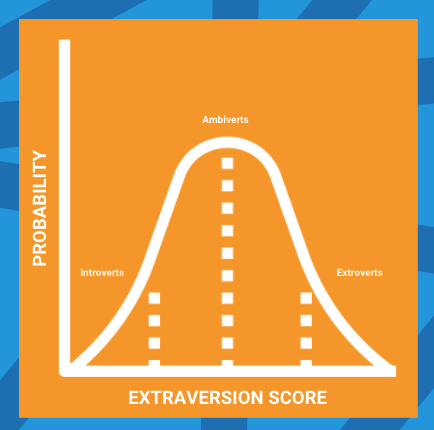
Research over the years has shown that there is enough of a variation in human personality for most of the scientific community to favor trait theory. Additionally, the most widely accepted theory of personality, the Big Five Theory, is part of trait theory. The Big Five is a theory in which five broad categories are the building blocks of personality, which most people have heard of using the acronym OCEAN: Openness, Conscientiousness, Extroversion, Agreeableness, and Neuroticism. Everyone falls on a spectrum in each of these categories, and sometimes these are broken down into smaller and more specific scales. This personality theory is the backbone of many of the personality assessments that are used today, like MyPrint® or the Big Five Inventory.
You are Unique!
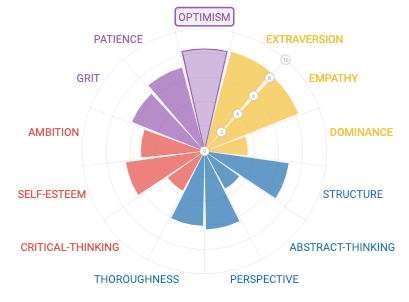
Now that you understand the differences between Types and Traits, which theory do you prefer when it comes to showcasing your soft skills? The one that generalizes you in a standard box, or the one that lets you expand outside those walls to showcase your unique qualities? If you want to discover more about your soft skill strengths, take a free MyPrint® assessment today! Once you have completed the questionnaire, you can begin using your traits to be more productive, improve your interpersonal skills, and set your personal and professional goals specific to your individual attributes. Additionally, you can see how your personality radar and motivation scales show the special qualities that make you YOU!
Looking for additional resources and support? Email Talentoday at customer@talentoday.com to learn more about our assessment and services!




